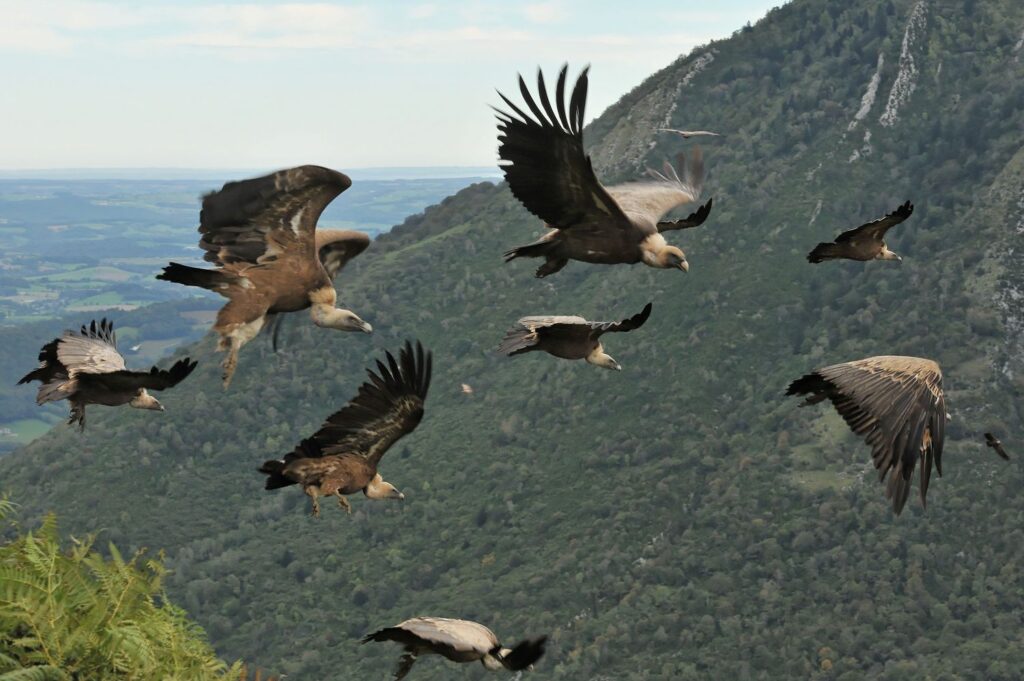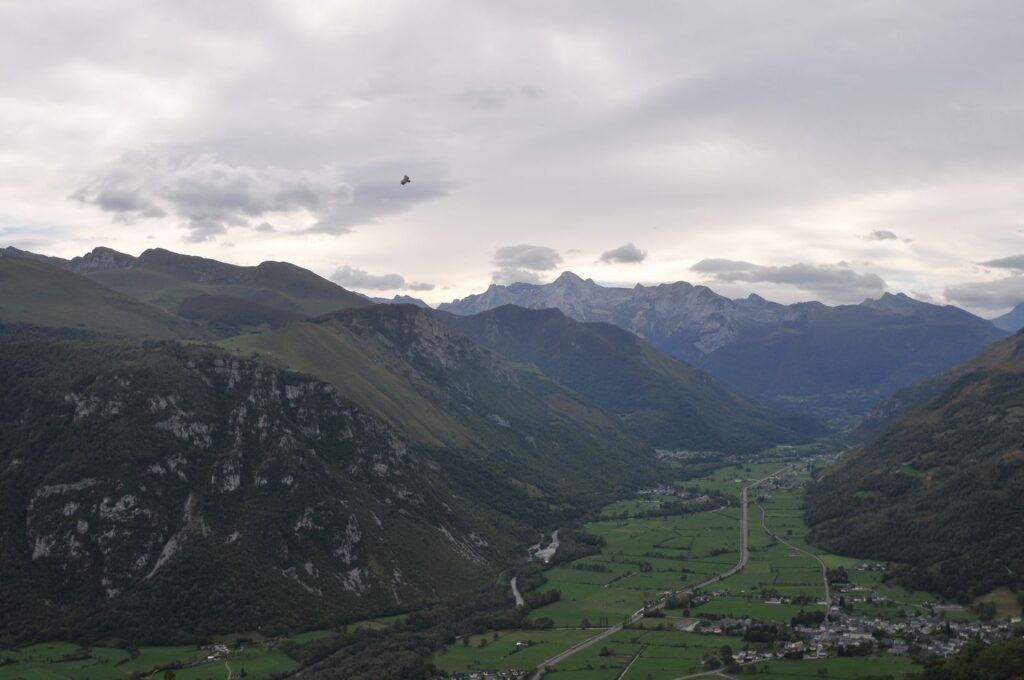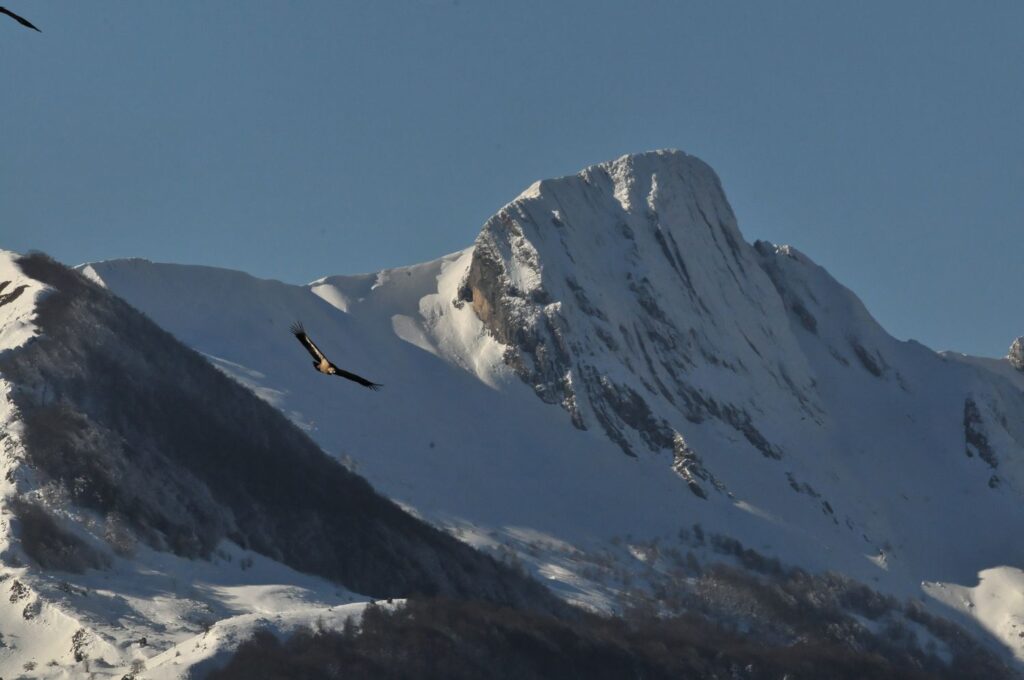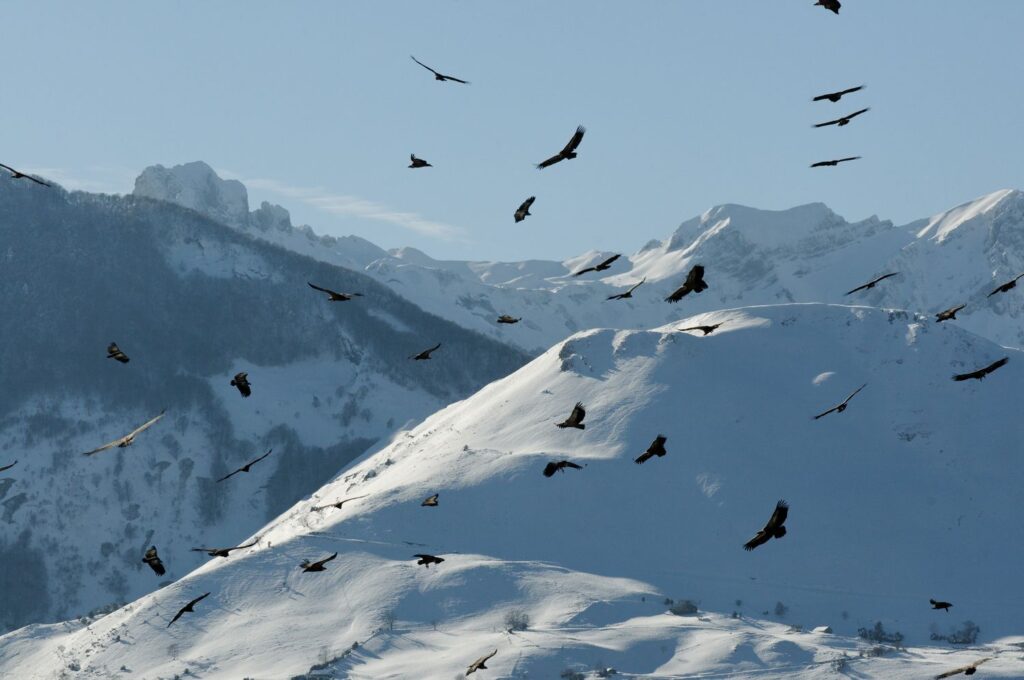
Vultures are the only obligatory scavengers among terrestrial vertebrates. Nevertheless they are one of the most threatened groups of birds.
In Europe, vultures have relied on livestock since antiquity as a food source. In France in 1960, the last stronghold of the Griffon Vulture Gyps fulvus was in the Pyrenees, where vultures depend on extensive livestock farming and also find wildlife and carrion in the mountains. However since the 1970s, a part of the Pyrenean population also frequents large animal by-product feeding sites at intensive pork farms and slaughterhouses in Spain. The massive closure of these feeding sites since 2006 resulted in increased mortality and a strong reduction in breeding success. In the Ossau National Nature Reserve (RNNO), where the vulture colony has been monitored since 1974, breeding success has dropped by 40% since 2006, and the body condition of fledglings has also been adversely affected. Since 2010, with the restoration of Spanish feeding sites, the situation seems stabilized but the viability of this population remains threatened.
However hardly anything is known about local movements of vultures in the Pyrenees, neither before nor after the crisis of 2006. The last animal by-product feeding site was closed in 1997 in the Ossau Valley, and since then, vultures have been finding carcasses in summer on alpine meadows and in winter in Spain or Basque country.

After the recommendation of the management committee of the RNNO, a group of 14 farmers of the Ossau Valley installed an experimental collective animal by-product feeding station in December 2012, with the technical and financial help of the Pyrenees National Park (PNP). In anticipation of the installation of new animal by-product feeding sites in the Pyrenees, the PNP wants to understand the scavenging behavior of vultures and how they are making use of the first feeding site in relation to the resources available in the mountains of Spain. For the new management plan of the RNNO, it is necessary to study the potential impact of this feeding site on the breeding success of the colony.
Numerous other more basic questions remain concerning the feeding habits of vultures and their use of space. Do they prefer carcasses found at feeding sites or scavenged in the mountain areas? Is their behavior influenced by the feeding sites, which are more predictable in time and space than their natural resources? Are they faithful to the same sites or do they scavenge randomly? Do their habits vary according to age, sex or season?
To answer these questions, 13 adult Griffon Vultures, nesting inside or near the RNNO, were captured and equipped with UvA-BiTS tags in November-December 2013 in order to track their movements over several years.


Contact persons, funders and participants
Olivier Duriez, Université Montpellier 2 – Centre d’Ecologie Fonctionnelle et Evolutive, Montpellier, France olivier.duriez@cefe.cnrs.fr
Didier Peyrusqué, Réserve naturelle d’Ossau, Parc National des Pyrénées, Tarbes, France pnp.ossau@espaces-naturels.fr
Eric Sourp, Réserve naturelle d’Ossau, Parc National des Pyrénées, Tarbes, France pnp.sourp@espaces-naturels.fr
Willem Bouten, University of Amsterdam Institute for Biodiversity and Ecosystem Dynamics / Instituut voor Biodiversiteit en Ecosysteem Dynamica (IBED) w.bouten@uva.nl
